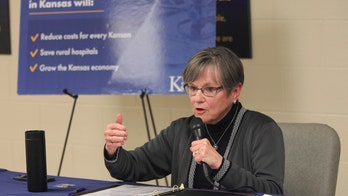It was a dramatic scene, not Hollywood drama mind you, but high theater for the Supreme Court in a springtime showdown over the future of this country's gun laws. The only thing missing was the cameras.
Attorney Alan Gura was facing a barrage of questions from Justice Stephen Breyer when suddenly Justice Antonin Scalia joined the discussion to counter Breyer's intense examination. The intellectual skirmish between two frequent foes ended only when Gura decided he needed to save the rest of his time for the end of the argument session and sat down in his chair.
Only a couple of hundred people can honestly claim to have witnessed the scene. The Supreme Court's total ban on cameras inside its courtroom plays no favorites for cases large or small.
But this could soon change as there is growing momentum for the court to finally follow the path set by federal lawmakers decades ago and install cameras inside its courtroom and broadcast to the world what takes place when the nine black-robed justices sit together on the bench.
Senator Arlen Specter, D-Penn., says he's moving closer to pushing through a law that would require television coverage from inside the Supreme Court.
"They like to run their own show and staying under the radar so to speak enables them to do pretty much as they please," Specter told Fox News. He thinks the court's rulings would better mirror public opinion if the outside world is able to watch the justices on a regular basis. Specter notes that Congress has administrative oversight over the Supreme Court but acknowledges that the justices would have the final word if they declared the camera law unconstitutional.
Specter's bill passed through the Senate Judiciary Committee earlier this year and the outgoing senator says it will "soon" move to the Senate floor.
"None of the three branches like to hear one of the others tell them how to do their business," C-SPAN founder Brian Lamb said in an interview with Fox News. "And I think the court probably feels as strongly about this as anybody. And the more the Senate makes noise about forcing them to go on television probably the more put they're going to put their hand up and say ‘no!'"
Gura won his case when the high court, in a 5-4 ruling, extended the reach of the Second Amendment right to keep and bear arms to all Americans across the 50 states. Many believe McDonald v. Chicago was the most important case the justices heard this past year. But the court didn't think the case's oral arguments or the reading of Justice Samuel Alito's controlling opinion and Justice Breyer's blistering dissent were important enough to permit a video camera--and even denied C-SPAN's request for a same-day release of an audio recording.
C-SPAN and its affiliated networks air gavel to gavel televised coverage of the House and Senate floors as well as countless committee hearings on Capitol Hill. Lamb has reached out to the court to do the same for its oral arguments without success.
Opposition from the justices is longstanding and in some cases strongly held. Former Justice David Souter's oft-noted comment that cameras would only enter the courtroom over his dead body have given way to Justice Sonia Sotomayor's apparent openness to televised coverage. In her recent testimony before the Senate Judiciary Committee, high court nominee Elena Kagan spoke of the importance of the "public's ability to know how our governmental institutions work."
Whatever progress that may have been made towards cameras in the Supreme Court may not be enough to overcome the objections of some justices including Antonin Scalia and Anthony Kennedy.
"The majority on my court feel very strongly however, that televising our proceedings would change our collegial dynamic," Kennedy said in 2007 and expressed feared that if Specter's legislation becomes law it would introduce an "insidious temptation to think that one of my colleagues is trying to get a sound bite for the television."
A Farleigh Dickinson University poll taken earlier this year shows that 61% of Americans think televising the Supreme Court's oral arguments would be a good thing.
Specter says a 1980 high court opinion forcing open courtrooms to print reporters helps make his case in an advanced media age. "Newspapers have a right to be in the Court's proceedings. But today most people get their news from Fox and television and radio. So people ought to have access to the court through television as I see it."
Fox's Shannon Bream contributed to this report.




